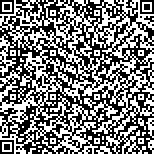| 引用本文: | 王芳,范嗣刚,赵超,王鹏飞,闫路路,邱丽华,闫喜武.斑节对虾TSG101基因的克隆及表达分析[J].海洋科学,2019,43(7):122-131. |
| |
|
| 本文已被:浏览 1046次 下载 785次 |

码上扫一扫! |
|
|
| 斑节对虾TSG101基因的克隆及表达分析 |
|
王芳1,2, 范嗣刚2, 赵超2, 王鹏飞2, 闫路路2, 邱丽华2,3, 闫喜武1
|
|
1.大连海洋大学 水产与生命学院, 辽宁省贝类良种繁育工程技术研究中心, 大连 116023;2.中国水产科学研究院 南海水产研究所, 广东 广州 510300;3.农业农村部水生动物基因组学重点实验室 北京 100141
|
|
| 摘要: |
| 为探究肿瘤易感基因101(简称TSG101)对斑节对虾(Penaeus monodon)的免疫应答作用,了解在细菌刺激下斑节对虾的机体发生的变化机制,本研究以哈维弧菌(Vibrio harveyi)和金黄色葡萄球菌(Staphylococcus aureus)为实验组,以磷酸缓冲液(PBS)为对照组,通过荧光定量分析展开对斑节对虾对菌刺激的免疫应答作用。结果显示,斑节对虾的TSG101在各组织中均有表达,在肝胰腺中的表达量最高。在金黄色葡萄球菌刺激下,斑节对虾的TSG101在肝胰腺中的表达量与对照组相比呈极显著上调(P<0.01),第12小时的TSG101 mRNA的表达量达到最大(为对照组的21.60倍);在鳃中的表达量与对照组相比呈极显著上调(P<0.01),第6小时斑节对虾TSG101的表达量达到最大值(为对照组的3.64倍)。在注射哈维弧菌第9小时,肝胰腺中的PmTSG101 mRNA表达量极显著上调(P<0.01)且达到最大(为对照组的2.50倍)。实验结果初步表明,斑节TSG101参与斑节对虾的先天免疫反应,在金黄色葡萄球菌和哈维弧菌的刺激的情况下,该基因RNA水平的表达情况发生明显变化。 |
| 关键词: 斑节对虾(Penaeus monodon) 肿瘤易感基因101 金黄色葡萄球菌(Staphylococcus aureus) 哈维弧菌(Vibrio harveyi) |
| DOI:10.11759/hykx20190321001 |
| 分类号:S917 |
| 基金项目:国家自然基金应急管理项目(31741121);院级基本科研业务费重点研究项目(2018HY-ZD0204);海南省重点研发计划项目(ZDYF2018163) |
|
| Characterization and expression analysis of TSG101 in black tiger shrimp (Penaeus monodon) |
|
WANG Fang1,2, FAN Si-gang2, ZHAO Chao2, WANG Peng-fei2, YAN Lu-lu2, QIU Li-hua2,3, YAN Xi-wu1
|
|
1.Liaoning Province Shellfish Breeding Engineering Technology Research Center, Dalian Ocean University, Dalian 116023, China;2.South China Sea Fisheries Research Institute, Chinese Academy of Fishery Sciences, Guangzhou 510300, China;3.Key Laboratory of Aquatic Genomics, Ministry of Agriculture and Rural Affairs, Beijing 100141, China
|
| Abstract: |
| This study was conducted to explore the immune response of the tumor susceptibility gene 101 (TSG101) of Penaeus monodon and to understand the mechanism underlying the changes occurring in the body of P. monodon in response to bacterial stimulation. Vibrio harveyi and Staphylococcus aureus were used as the experimental group and phosphoric buffer solution was used as the control group. The immune response of P. monodon to bacterial stimulation was analyzed using quantitative real-time PCR (qRT-PCR), which demonstrated that PmTSG101 was ubiquitously expressed in all tested tissues, with the highest expression level being detected in the hepatopancreas. The expression pattern of PmTSG101 in the hepatopancreas and gill was analyzed after challenge with V. harveyi and S. aureus. Results showed that with S. aureus challenge, the expression of PmTSG101 in the hepatopancreas was significantly upregulated compared with that in the control group (P < 0.01), reaching the maximum at 12 h (21.6 times compared with that in the control group). The expression of TSG101 was also significantly upregulated in the gill compared with that in the control group (P < 0.01), reaching the maximum at 6 h (3.64 times compared with that in the control group), after challenge with S. aureus. The expression of PmTSG101 mRNA was especially upregulated (P < 0.01) in the hepatopancreas at 9 h after V. harveyi challenge. These results indicate that PmTSG101 may play a vital role in the innate immune response of P. monodon. Challenge with S. aureus and V. harveyi resulted in significant changes in the mRNA expression of PmTSG101. |
| Key words: Penaeus monodon TSG101 Staphylococcus aureus Vibrio harveyi |
